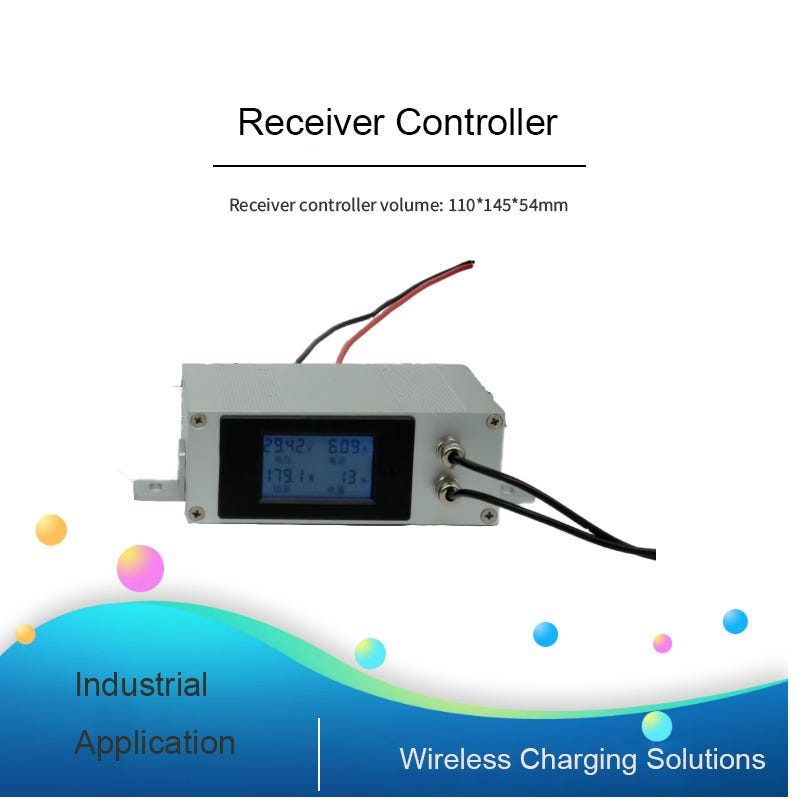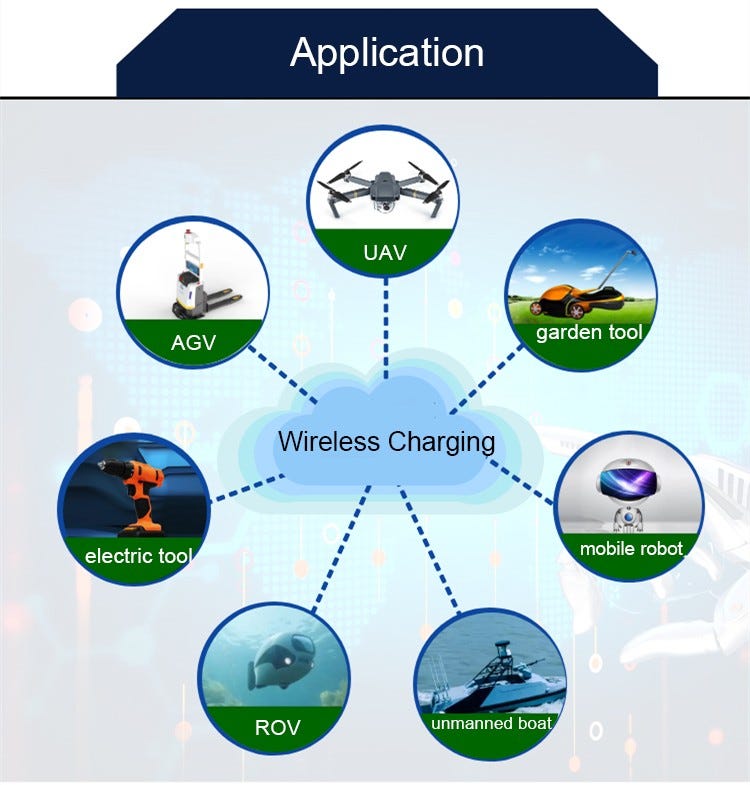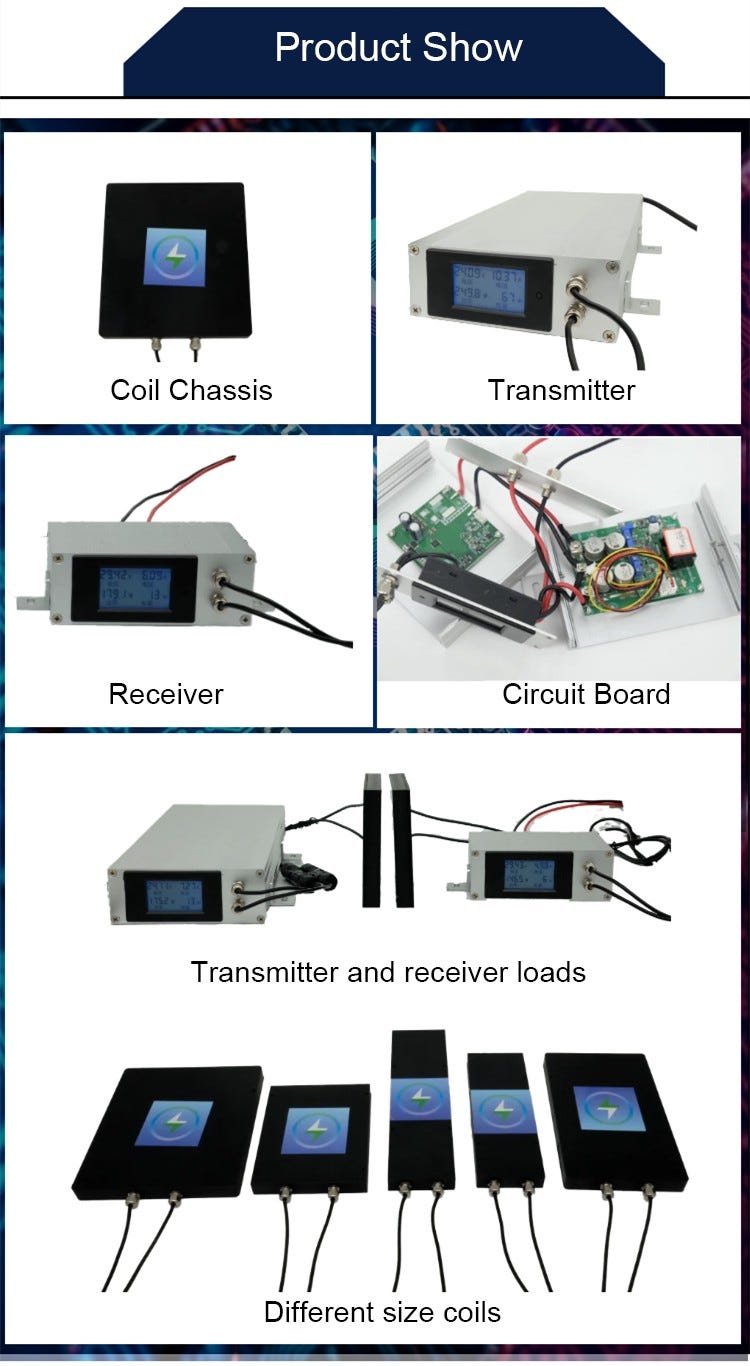
CHARGING IN THE INDUSTRIAL SETTING
Regardless of the type of robot or AGV, they all require frequent charging.
Up to now, the most widely adopted method of charging these devices has been through metal contact. However, the metal-contact charging method has proven to be a disadvantage in the industrial sector due to its inability to ensure safety. Many industrial settings may present unfriendly, unpredictable environments that may make it difficult to safely charge. For example, delivery drones or AGVs cannot be charged if they have gotten wet, such as if they were outside in the rain. In some settings there are robots that work entirely in the water. With metal-contact charging, these unmanned underwater vehicles (UUVs) must be removed from the water and completely dried before safe charging can be ensured.
Aside from issues caused by the presence of moisture, there are additional factors present in industrial settings that contribute to the unpredictability and potential dangers of metal-contact charging. This includes corroded metal due to wet or acidic environments, or the accumulation of dust or debris on surfaces. These conditions can cause electric sparks or arcs to be generated by the metal contacts when charging, which can damage the robot or even cause a fire or worse.
WIRELESS CHARGING FOR INDUSTRIAL SAFETY
Wireless power transfer is the solution for safe and convenient charging of robots, AGVs, and other industrial automation machinery in the industrial sector. Without plugging into a port or socket, and indeed without having to make physical contact at all, an AGV or other industrial device can wirelessly obtain the power it needs. And for those devices that use batteries, mechanical actuators can be set up to directly power-up wirelessly.
Furthermore, AGVs and other self-propelling industrial and logistics devices can be programmed to return to their docks or chargers when they need to get power, removing the need for workers to have to go onto the factory floor to maneuver a device or to hook it up to anything for the charge.
While it increases safety, industrial wireless power transfer also helps to reduce overall costs. Because there is no human intervention needed for charges, automated industrial equipment designed for wireless charging can schedule its charging for times without impact to the factory processes, reducing downtime. This ability to control the frequency of charging means this equipment can utilize fewer heavy batteries. Not only does this cost less, but the resulting reduction in weight means the device can use a lighter motor, smaller wheels, and a less expansive navigation system. All of these factors combined can result in a noticeable reduction in costs.
Today’s industrial footprint is growing larger and more technically challenging every year. Charging factory automation and other industrial devices with wireless power transfer will not only meet the diverse demands of the changing industrial landscape, it will do so while increasing safety and convenience while reducing costs.

BENEFITS OF INDUSTRIAL WIRELESS CHARGING
Standardizing wireless power delivery to industrial equipment delivers many benefits:
Safe: Removing metal-contact charging ports greatly reduces equipment exposure to moisture, dust, and other environmental conditions that can lead to electrical discharges, fire, or worse. And as some devices can be programmed to return to their chargers when power is needed, there are fewer needs to send human workers into dangerous industrial settings.
Robust: Wireless power delivery without plugs, ports, and moving parts means less wear-down of equipment and longer equipment life. There is no plug or port to be worn out or damaged by regular connection and disconnection.
Flexible: Wireless connectivity provides limitless charger connections, even if it is wet or dirty. This means the same charger be used in almost any industrial setting, no matter the environmental conditions.
Redundant charging stations: Rather than a special charger for each robot or device, charger standardization makes it possible for factory managers to install several chargers that can be used by multiple AGVs and other mobile industrial devices, even if they are from different standard-compliant manufacturers.
Cost savings. The benefits of wireless power transfer mean many industrial automation devices can be designed with smaller, lighter components, resulting in noticeable reductions in costs.

LEARN MORE AND GET INVOLVED
The Industry wireless charging standard is developed by the Industry Spec Group of the WPC Household and Industry ecosystem that also hosts the standardization of wireless power solutions for Ki Cordless Kitchen and light electric vehicle (LEV) applications.
The Industry Spec Group includes companies from various industrial segments who work together to ensure a broad coverage of requirements and market adoption. This includes industrial technology and battery suppliers, industrial robot, and other equipment manufacturers, and those who produce charging infrastructure solutions.
Regardless of where your company’s products intersect with the industrial automation market, or if you represent or are part of an organization involved in or promoting or facilitating factory automation, we invite you to join our efforts, present your views and requirements, and influence the specification.
Contribute to this exciting new standard by sharing your insights, technology, and expertise to enable technical development and early prototyping to bring this new standard to life. If you would like to become a member of the Wireless Power Consortium and be involved in the creating the Industry standard, contact us for more details.





























